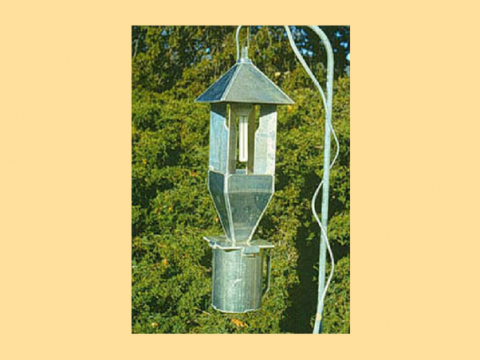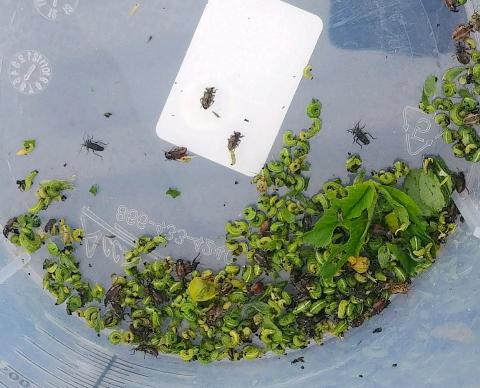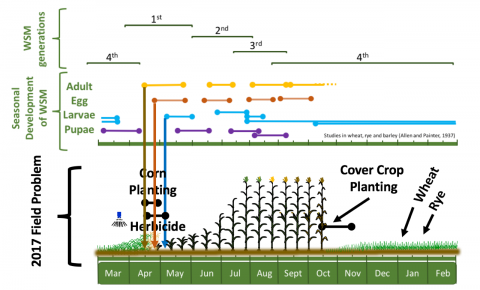Large Populations of Painted Lady Butterflies
January 8, 2018
In 2017 large populations of painted lady butterflies were seen across the state, raising concerns about whether the larvae form (thistle caterpillars) of this insect would cause damage to soybean fields. An article from the Proceedings of the 2018 Nebraska Extension Crop Production Clinics.
Insect Light Trap Data Available for 3 Sites
June 6, 2018
UNL Extension Entomology is monitoring crop insect pests (primarily moths) using black light traps at the Haskell Ag Laboratory near Concord, the South Central Ag Laboratory near Clay Center, and the West Central Research and Extension Center near North Platte.
Scout Emerging Corn for Insects; Don't Take Protection for Granted
May 16, 2018
As corn begins to emerge, be alert to the potential for damage from early season insects such as cutworms, wireworms, white grubs or wheat stem maggot. Seed treatments provide some protection, but can be overwhelmed in some circumstances, allowing losses.
Scout Diligently for Alfalfa Weevils in May And June
May 16, 2018
High populations of alfalfa weevils have been found in alfalfa throughout the Nebraska Panhandle; lower populations were reported this week in central and eastern Nebraska. The economics would warrant continued scouting through June to provide for timely treatment, if necessary, and yield protection.
Corn Rootworm Management Update
January 8, 2018
From the 2018 Crop Production Clinic Proceedings: Corn rootworm continues to be a problem for Nebraska growers who rotate crops infrequently. Additionally, resistance to insecticides and some Bt corn reduces efficacy of these important tools in some fields.
Wheat Stem Maggot Adult Monitoring: A Pest of Cover Crop-to-Corn Transitions
April 25, 2018
This article looks at wheat stem maggots in cover crops-to-corn transitions, including their biology, risk for damage to early season corn, and what to look for this spring.
Wheat Stem Maggot in Corn: Plan on Scouting Your Cover Crop Fields This Spring
March 8, 2018
Wheat stem maggots were an issue for some eastern and southern Nebraska farmers planting corn directly into a growing cover crop, leading to questions about how to best manage this scenario in 2018. Learn why entomologists don't recommend adding an insecticide to the herbicide when terminating the cover crop.
Handy Bt Trait Table Updated for 2018 Corn
January 31, 2018
The Handy Bt Trait Table, which lists the types of Bt hybrids present for all commercialized corn, has been updated for 2018. Now in its 15th year, the table has become the standard authoritative reference to Bt toxins in corn.







